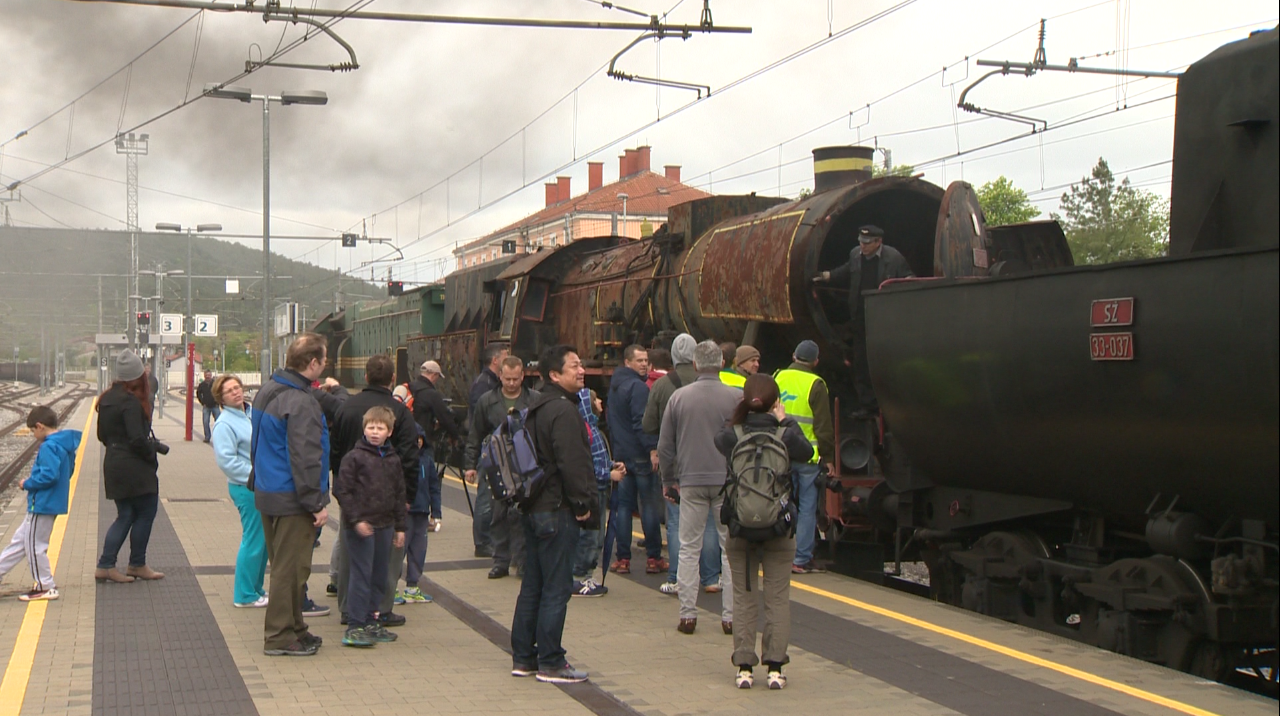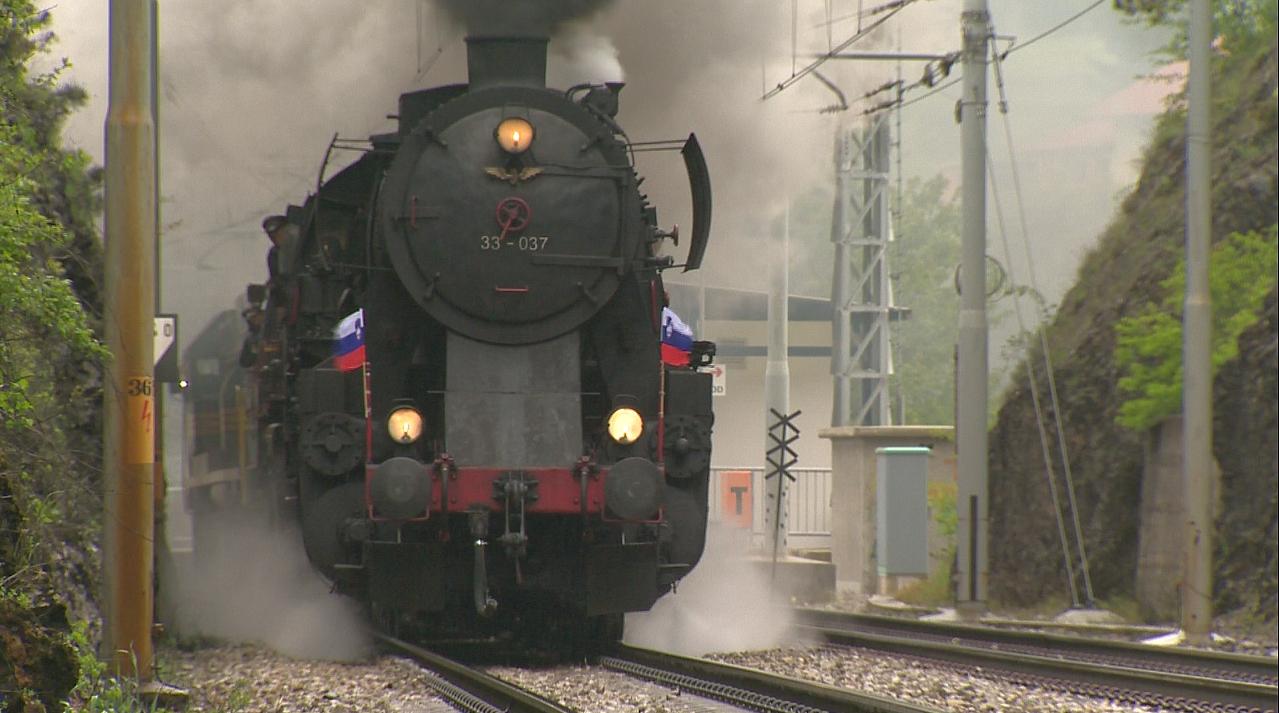

On Monday morning the German military locomotive 33-110 set out on its last rail journey. For several decades it was parked at the train station in Štanjel.
The locomotive is no longer operational and so another German steam locomotive, which still pulls a museum train on Slovenia's tracks, started pulling it towards Pivka.
The transport of the rusty 73-year-old locomotive aroused the interest of many. A surprisingly large number of people also came to see off the interesting engine on its last journey. In Pivka the locomotive was welcomed by a large crowd and a local brass band.
A lot of work with the old puffer
The engine driver of the steam locomotive, which brought in the military locomotive in Pivka, was an employee of the Slovenian Railway company and steam locomotive enthusiast Aleks Žigon. He says driving a German machine is an interesting and at the same time demanding job. The steam locomotive which he drives is still in perfect condition, even after seven decades. However, before each journey there is always a lot of work to be done with the locomotive.
One has to check and oil the wheels, pour water and fire up the steam locomotive. For a ride from Divača to Pivka the stoker and engine driver had to throw a tonne and a half of coal into the engine's firebox.
"There is no protection and there are no safety switches on a steam locomotive. Everything works mechanically. You have to know the soul of the engine and think of practically everything. We have to pay attention that there is enough water, enough fire, enough steam. The whistle is also very important. If it doesn't work, the train is not allowed to leave the station," says Metličar.
From military locomotives to peace locomotives
During WWII Germany made 6,200 such steam locomotives. With them they transported soldiers, weapons, equipment and food to the frontlines. Unfortunately, there were also locomotives that went the opposite direction, transporting people to concentration camps, says the head of the Park of Military History in Pivka, Janko Boštjančič. After the war these locomotives were also used for the reconstruction of Europe. They only served a couple of years in the war and several decades after the war, so from military locomotives they turned into peace locomotives.
The number of people that came out to see off the locomotive on its last rail journey was quite surprising. Among them was also David Erik Pipan with his son: "I've been following the story of this interesting locomotive for a long time now. We went to see the locomotive in Štanjel with the family many times. I'm happy now that it will finally have its place in the Park of Military History in Pivka."
Awaiting its lifting and further transportation
There was also no lack of young enthusiasts who got the chance to climb into the cabin of the steam locomotive to get a closer view of the engine. Around noon the locomotive arrived in Pivka. It will now wait at the train station there until Saturday when we can look forward to a new technical feat, which will without doubt, once again, draw a big crowd of people.
The 150-tonne-heavy and 23-metre-long locomotive will be lifted, placed onto a truck, and then transported on roads up to the nearby Park of Military History, where it can then look forward to a major overhaul.
T. H., Barbara Renčof/TV Slovenija; translated by K. J.

































































